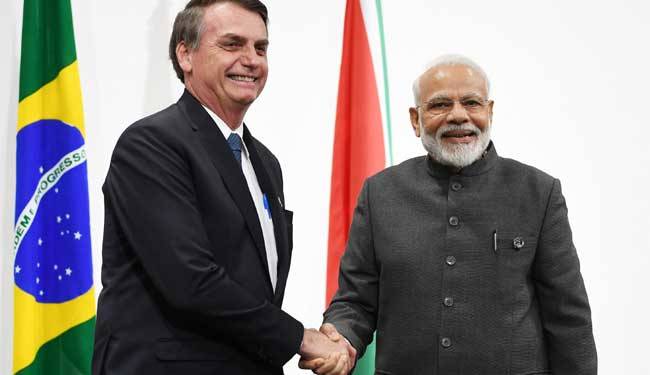Prime Minister Modi throughout his tenure has made a series of deft diplomatic moves that have made the world take notice of India’s growing soft power. PM Modi who is currently in Brazil for the BRICS Summit, yet again made a diplomatic masterstroke as he invited Brazilian President Jair Bolsonaro to be the Chief Guest on the occasion of India’s Republic Day, which the latter graciously excepted.
Jair Bolsonaro freed Brazil from the throngs of Communism as the right-wing leader swept to power earlier this year as he tided the wave of anti-Communism in Brazil. This is a significant move as India needs to reach out to South America, as there is tremendous potential for trade relations between India and Latin American countries. The LAC region comprises 43 countries and the major economic and trading partners of India are Brazil, Argentina, Peru, Chile, Colombia, Ecuador, Guatemala, Venezuela, Panama and Cuba all of which are growing at a great pace. India-LAC bilateral trade during 2017-18 stood at USD 29.33 billion as against USD 24.52 billion in 2016-17. Both the sides have a huge potential to boost economic ties in areas like agriculture, health, energy and information technology.
Brazil faced a crippling recession as the then Brazilian government failed to carry out the necessary fiscal reforms and in 2017 and 2018, the economy grew at a meagre pace of 1.1% a year. Nonetheless, Brazil continues to be an emerging economy and an important trade partner for India. The recession had a crushing blow on the bilateral trade and both the leaders have sought to alter the status quo as they aim to deepen their bilateral trade ties.
Indian exports to Brazil stood at US$ 4.29 billion in 2015 while Indian imports from Brazil stood at US$ 3.62 billion. Thus the overall bilateral trade was at US$ 7.9 billion, with the balance of trade favouring India with US$ 672.13 million compared to US$ 1.846 billion in 2014. About 39% of Indian exports were value-added petroleum products such as diesel. The other prominent export items from India were organic chemicals and pharmaceutical products valued at USD 730 million. Boilers, machinery and mechanical appliances were other major items in India’s export basket constituting about US$ 226 million. The other important export items included textile products (cotton, apparels, accessories etc.) which amounted to US$ 150 million.
Brazilian exports to India were also weighed in favour of petroleum products, mainly crude oil. India also imported soya oil worth US$ 420 million, sugar worth US$ 363 million, copper ore worth US$ 250 million and gold worth US$ 261 million. Total trade between India and Brazil was USD 5.64 billion in 2016, which was 28.62% less than the total trade recorded in the same period in the previous year (USD 7.90 billion). In the ranking for the largest trading partners of Brazil, India slipped to 11th position from 10th position last year. While Brazil’s exports to India (of USD 3.16 billion) declined by 12.16%, India’s exports to Brazil (USD 2.48 billion) decreased by 42.12% with India having a trade deficit of USD 680 million with Brazil.
On the other hand China is Brazil’s largest trading partner with $98.7 billion in two-way trade last year. China buys huge quantities of commodities from Brazil. However, before elections, Bolsonaro in his campaign repeatedly hit out at China and said, “The Chinese are not buying in Brazil. They are buying Brazil.” Things have changed a little and Bolsonaro has adapted a more conciliatory tone since coming to power. Amid the ongoing trade war with the US, China is looking to boost trade relations with the Latin American countries. In July this year, Chinese Foreign Minister Wang Yi visited Brazil and other Latin American countries. Following his return to Beijing, Colombian President Ivan Duque Marquez arrived in China on the same day for a three-day state visit that included a meeting with Chinese President Xi Jinping.
Strong ties with Brazil opens up a great opportunity for India to venture into the Latin American territory which the country hasn’t really explored yet.
Bolsonaro is extremely popular in Brazil and despite the Amazon fires and the disapproval of indigenous people for him, he continues to be popular as he is goth oriented and is determined to get the Brazilian economy back on track. Modi has invited him because he is the leader of Brazil and nothing more should be read into it as two leaders of two big democracies have come together to enhance bilateral ties.


































